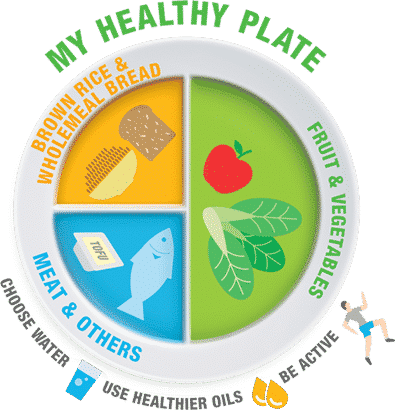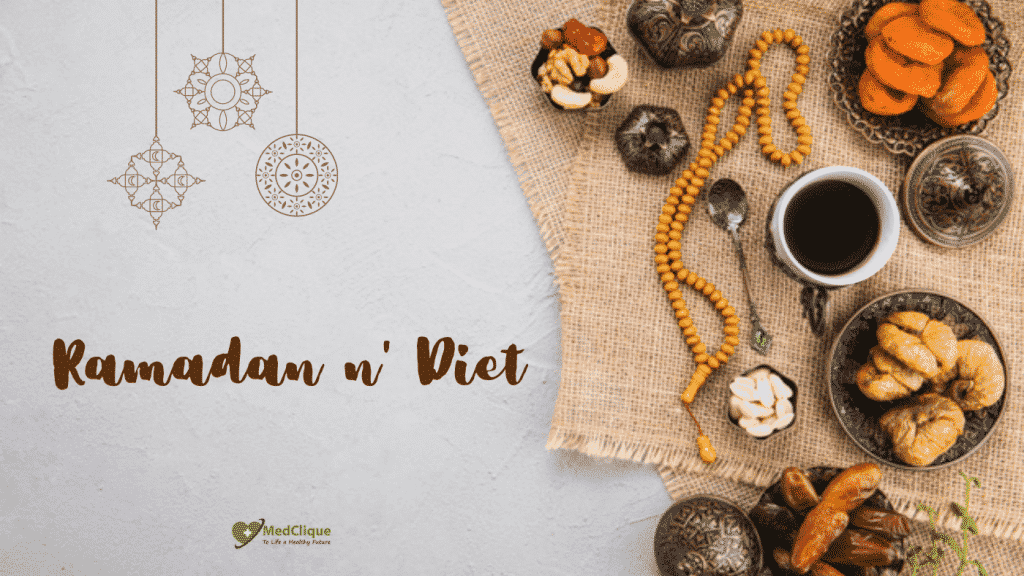In our last post, we have already discussed in detail about management of diabetes during Ramadan and while doing fast. If you are a diabetic individual, these small tips on Ramadan fasting and diet plan will help you keep healthy fast.
Ramadan is a holy month of worship and spiritual reflection, where Muslims fast from dawn to dusk. Muslims taking part in Ramadan do not eat or drink anything during daylight hours, eating one meal (the ‘suhoor’ or ‘sehri’) just before dawn and another (the ‘iftar’) after sunset.
People with diabetes have a lot of concern about diet while practicing Roza and they need to take conscious care, during Sehri and Iftar.
Diet during Sehri
As you are going to fast for the next 12 to 15 hours, your food should be balanced, nutrient-dense and protein-rich. It will help you avoid hypoglycaemia and your body gets the required energy gradually for a longer period of time.
Include Protein Rich foods
- Include milk, milk products like paneer, or curd in your food. Or can include daliya, oats, sattu with milk as an option.
- Eggs or Omelette is also a good source of protein.
- A Fistful of Dry fruits like Walnuts, Almonds, Pistachios, Cashews can be eaten raw or in powdered form with milk. Add a spoonful of oil seeds too like Chia seeds, Flax seeds, Sunflower or Pumpkin seeds.
- Pulses, Legumes and Sprouts.
Avoid refined foods
- Avoid refined foods like Biscuits, bread, and Rusk.
- Include complex carbohydrates like Roti, paratha (made of wheat, Jowar, Bajra, etc) in your morning meal.
- Avoid excess drinking of tea, coffee.
- Add more fresh fruits and vegetables to your diet with an adequate quantity of water.
Fluid intake should also be sufficient to minimize the risk of dehydration.
Diet during Iftar
- Khajur/Dates are rich sources of micro-nutrients and anti-oxidants. Being a person with diabetes, you can consume 2 to 3 dates daily.
- Instead of Sharbat, you can have lemon juice, buttermilk, raw mango Panna, Mint Jaljeera, or coconut water to avoid hyperglycaemia.
- Avoid fried foods like Samosa, Kachori, Pakoda.
- Prefer steamed, shallow fry, or air fry snacks. This will prevent an increase in blood sugars, cholesterol, and weight.
Healthy plate for Dinner:
- Divide your meal into parts.
- Do not eat at one go, eat slowly and Chew well.
- Have frequent small meals.
- Avoid sweets, rather eat fresh fruits and dry fruits in moderation.
Design your Healthy Iftar Plate…
- Half of your plate should be filled with fresh vegetables and salad (Dietary fiber), it will keep your blood glucose under control and will also avoid constipation.
- 1/4th of your plate should be filled with protein foods like eggs, lean meat or lean chicken, legumes, Chickpeas, Rajma, Moth, Chana, Barbati, etc.
- The remaining 1/4th plate should be filled with rice or roti. Roti can be made of wheat or different millets (jowar, bajra, ragi) or it can be a missi roti (mixed variety).

Final words
It is permissible in Islam for those with a health condition such as diabetes not to fast. However, Ramadan fasting has great spiritual significance for Muslims and many with diabetes do choose to fast. Whether to fast or not is a personal decision for each individual.
Much research has been done on the health implications of fasting for people with both type 1 and type 2 diabetes. There can be a risk of dehydration and hypoglycemia, for those with diabetes who observe the fast, especially in the spring and summer when days are longer and warmer (1).
If you are diabetic and are planning to fast it’s advisable to visit your doctor or healthcare team to talk about how to manage your condition while fasting.
- To avoid hypoglycemia, consume Protein-Rich complex carbohydrate Foods.
- To avoid hyperglycemia, avoid sweets and fried foods
- To avoid dehydration, consume water and healthy fluids
Must Read l How to manage diabetes during Ramadan?
